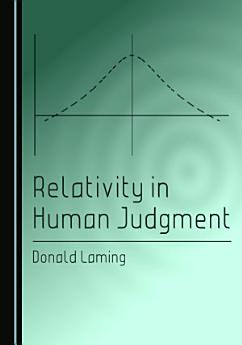Relativity in Human Judgment
About this ebook
The psychological task is known as ‘absolute identification’. Different frequencies and loudnesses of sound, brightnesses of light, different colours and tastes are to be identified one at a time. Experiment has shown that people are unable to identify more than 5 different frequencies, loudnesses, brightnesses absolutely–that is, without comparison with some other frequency or loudness. This book identifies the nature of the relation between successive judgments and the biases that result. It will be of particular interest to psychologists engaged in the study of all kinds of judgment.
About the author
He taught chiefly mathematical psychology, publishing Mathematical Psychology (1973), but this has natural developments in psychophysics, sensory discrimination and signal detection theory, learning, memory, and human judgment. A particular concern since 1968 has been the judgment of supra-threshold differences between stimuli. Further publications include: Sensory Analysis (1986), Contributions to Mathematical Psychology, Psychometrics, and Methodology (1994), and The Measurement of Sensation (1997).
Latterly he has been interested in the application of psychophysics to social behaviour, around which he has published further work.




